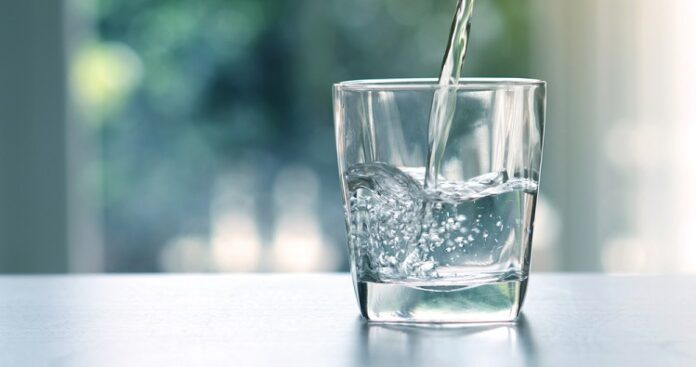Water is the essence of life, a fundamental resource that sustains every living being on Earth. AQUAANALYTIC is committed to ensuring clean and safe water access by providing innovative water testing solutions. AQUAANALYTIC LLC Dubai is an authorised importer and distributor of the Evoqua Water Technologies (USA) in the United Arab Emirates. This article will delve into the various aspects of ensuring clean and safe water, the challenges we face, and the solutions available to safeguard this precious resource.
Table of Contents
The Importance of Clean Water
Clean water is essential for drinking, cooking, sanitation, and overall health. It sustains ecosystems, supports agriculture, and powers industries. Access to clean water is not only about fulfilling physiological needs; it’s about enabling societies to thrive. To explore more about the importance of water, check out sources like letterboxd.org.
Challenges in Water Contamination
Understanding Pollution Sources
Water contamination arises from various sources, including industrial discharges, agricultural runoff, and inadequate sewage systems. These pollutants enter water bodies, endangering aquatic life and human health.
Health Impacts of Contaminated Water
Consuming contaminated water can lead to various health issues, from gastrointestinal problems to long-term illnesses. Vulnerable populations, such as children and older people, are at higher risk.
Environmental Consequences
Water pollution disrupts aquatic ecosystems, harming fish, plants, and other wildlife. It can lead to oxygen depletion, dead zones, and irreversible damage to delicate ecosystems.
Water Quality Standards and Regulation
Governmental Involvement
Governments play a pivotal role in setting water quality standards and enforcing regulations. Agencies monitor water bodies and industries to ensure compliance and take action against violators.
International Standards
International organizations like the World Health Organization (WHO) establish guidelines for safe drinking water. Collaborative efforts help align global practices to protect water resources.
Monitoring and Enforcement
Regular water quality testing and efficient enforcement mechanisms are essential to maintaining clean water sources. This prevents contamination and holds accountable those responsible for pollution.
Innovative Water Treatment Technologies
Reverse Osmosis
Reverse osmosis is a widely used technology that removes impurities from water through a semipermeable membrane. It’s effective in desalination and eliminating various pollutants.
UV Purification
UV purification uses ultraviolet light to deactivate pathogens, making water safe to drink without adding chemicals. It’s energy-efficient and suitable for small-scale treatment.
Nanotechnology Applications
Nanotechnology offers novel solutions for water treatment, such as advanced filtration systems and nanomaterials that adsorb contaminants.
Community Involvement in Water Conservation
Raising Awareness
Educating communities about water conservation and pollution prevention fosters responsible water usage and encourages behavioural changes.
Sustainable Practices
Promoting rainwater harvesting, reducing single-use plastics, and minimizing chemical usage helps conserve water and reduce pollution.
Protecting Watersheds and Ecosystems
Importance of Watershed Management
Watershed management involves preserving natural areas that contribute to water sources. It prevents erosion, filters pollutants, and maintains water flow.
Wetland Preservation
Wetlands act as natural filters, removing pollutants and sediments from water. Conserving wetlands is crucial for maintaining water quality. To get essential tips for safe and clean water, visit https://casetify.org/.
The Role of Industry and Agriculture
Sustainable Practices in Farming
Implementing sustainable farming practices reduces runoff and prevents agricultural chemicals from entering water bodies.
Industrial Effluent Treatment
Industries must treat their effluents before releasing them into water sources. Advanced treatment technologies minimize the impact of industrial processes on water quality.
Global Water Scarcity and Access Disparities
Water Scarcity Hotspots
Certain regions face severe water scarcity due to climate conditions, population growth, and mismanagement of resources.
Ensuring Access to Vulnerable Communities
Efforts are needed to provide marginalized communities access to clean water, addressing social disparities in water availability.
Investing in Water Infrastructure
Ageing Infrastructure Challenges
Many water supply and distribution systems are ageing, leading to leaks, contamination, and inefficiencies. Investing in modern infrastructure is crucial.
Smart Water Systems
Technology like sensors and data analytics enhances water management efficiency, reducing wastage and improving overall quality.
The Way Forward: Policy and Education
Advocating for Policy Changes
Citizens and organizations must advocate for stronger water protection policies and hold authorities accountable for their implementation.
Incorporating Water Education in Curricula
Educational institutions play a role in shaping future generations’ attitudes toward water conservation. Including water-related topics in curricula promotes awareness.
Conclusion
The journey to ensure clean and safe water is multifaceted and requires local, national, and global collaborative efforts. By understanding the challenges, implementing innovative solutions, and fostering a culture of responsible water usage, we can secure this vital resource for present and future generations.




